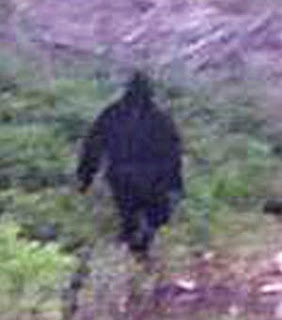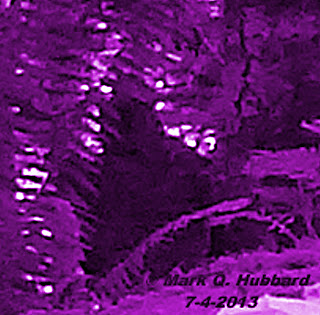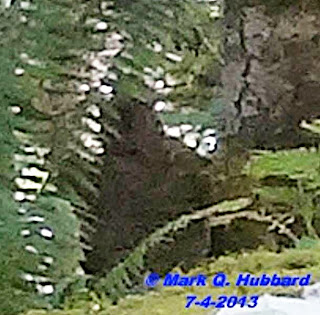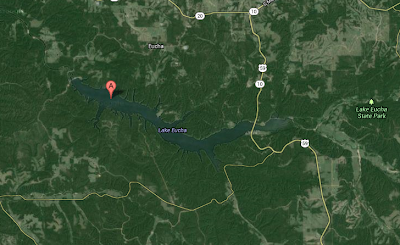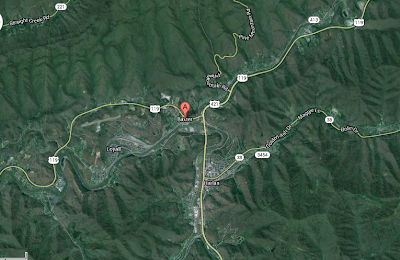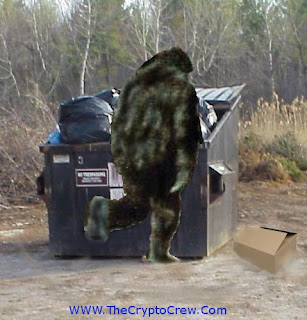 |
| why do some bigfoot stink? |
 By TCC Team Member Dorraine Fisher
Professional Writer, a nature and wildlife enthusiast who has written for many magazines.
By TCC Team Member Dorraine Fisher
Professional Writer, a nature and wildlife enthusiast who has written for many magazines.
The
Scent Of A Sasquatch
What’s
That Smell All About?
By TCC Team Member
Dorraine Fisher
With the now thousands of bigfoot
sighting reports around North America, we can start to see patterns, and also
differences in the types of reports in what people see, hear… and also smell.
So
what’s that awful smell all about? And why doesn’t everyone who’s had a sighting
report an odor when they have their encounter? Some report a smell, and some
don’t. Great apes are known to emit an odor when they’re excited or feel
threatened. Do sasquatches fall into that category? Is that all there is to it?
There are many and various thoughts on
the matter, and each makes sense in its own right. But what’s the real answer? I
asked a few experts in the community to try and shed some light on the subject.
Like zoologist, Dale Drinnon.
“People do it too. I’ve noticed my body puts out
a perfumy smell when I’m around a
woman I like, and a much more sour smell if I feel threatened. It’s more
exaggerated in
apes though.”
“What exactly causes it?”
I asked.
“It comes out in the
sweat and it’s produced by glands in the skin,” he explained. “A lot
of what people smell [during an encounter with sasquatch] is actually due
to feces clinging to the
body hair. That can be fairly fresh or old and stale depending on how long
it’s been there.”
“But
the curious thing is that many report an almost skunk-like odor,” I
said.
“That's
sulfurous fumes and they can come from the large intestine,” he
answered.
“The
smell resembles a wet animal with a skunky type of odor, but most folks describe
it much worse,” says Crypto Crew researcher, Bobby Long. “My garbage cans
outside are much worse.” Bobby lives and
tracks sasquatches in Oregon, a drier, more mountainous state, which brings me
to the next theory.
Leon
Drew, a bigfoot researcher from Colorado believes it may be a regional
thing.
“I
think the odor has to do with humidity and temperature. My encounter had no odor at 30 feet of
distance. I theorize that the Sasquatch odor is tied to sweat and perceived
danger. I feel in the dry mountain areas the odor is less than, say, Washington
State and the Swamp Ape in the Southeast,” he told me.
“Have
you ever smelled one during your research?”
“I
think I smelled one earlier this year when we were scouting for camping area. It
was a skunk-musk-like smell and it moved as we moved.”
And
these theories explain it to some degree, but other interviewees suggested that
maybe a sasquatch can create this smell at will. There are many animals that
have the ability to do this and why should a sasquatch not also have this skill?
Certain snakes like copperheads and pythons do it. Foxes, hyenas, and wolverines
also. Some use it as a defense mechanism, like stinkbugs and skunks, while
others seem to just emit an odor when they’re agitated or stressed.
But
there was still a curious element left here to ponder. How do we explain the
skunk-like element to the smell? Is that significant? Or just some kind of
coincidence?
This
brings me to the last theory and the most interesting one I’ve heard posed yet
that came from JC Johnson, a cryptid investigator with the organization, Crypto
Four Corners, in the Four Corners Region of New Mexico. And he has the video
footage to back up his idea.
“It’s just my observations,” he said
when he attempted to explain why he’s come to these conclusions. The video chronicles an investigation in which
a supposed sasquatch extracted a skunk from a drain pipe. In what seemed to be
quite a desperate attempt, the creature punched a hole in what appeared to be a
fiberglass or plastic drain pipe to extract the animal from its hiding place.
The body of a skunk had been found nearby earlier that day with only the scent
sack removed, which prompted the investigation of this local resident farm. JC
gleaned from the information collected on that investigation, and from others,
that sasquatches may harvest skunk scent glands in order to mask the smell of
their young, and deter any predators.
That
would certainly do it. Everyone knows that a skunk killed on the road is rarely
eaten by anything, including the crows and buzzards. And humans and other
animals usually just try to get away from it. So why would a sasquatch want to
kill one and work so hard to get the job done?
“We have reason to believe that jaguars are
back in this area again and may be threatening the young of the local wildlife
population,” JC explained.
This
event took place in a semi-rural area where human presence is prevalent and they
believe jaguars are now prowling. When new animals migrate and introduce
themselves to a new area, it always creates new problems for the wildlife that’s
already there. In this case, sasquatches.
So
if we put all the pieces together, it all makes sense. There could be many
factors that determine the smell in so many sightings reports. Maybe it’s one of them; maybe it’s all of
them. But JC also added that if you suspect sasquatch activity in your area and
there are large predators there also, you might add checking the local skunk
population to your research agenda. And maybe we can all help put the pieces
together in this.
But
watch the video and see what you think. *******DF
[Special Thanks to: Bobby Long, Leon Drew, Jc Johnson, Dale Drinnon for contributing to the article]
This post sponsored in part by

(Interested in sponsoring a story? then send us an Email!)








